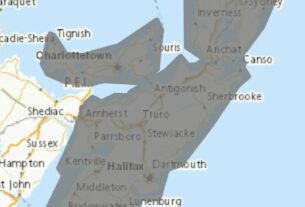**** Info via Environment Canada
Do you know your UV Index?
The list of great Canadian inventions is long and varied:
- Peanut Butter – created in 1884 by Canadian pharmacist Marcellus Gilmore Edson.
- The Pacemaker – first built in 1949 by Canadian engineer John Hopps, based on observations made by two Toronto-based cardiac surgeons, Wilfred Bigelow and John Callaghan.
- IMAX – invented by a trio of Canadian filmmakers — Graeme Ferguson, Roman Kroitor and Robert Kerr — in 1967, after being independently asked to produce large-screen films for Expo 67.
But did you know that the UV Index is another great Canadian invention? Developed by three scientists at Environment and Climate Change Canada, Drs. Tom McElroy, Jim Kerr and David Wardle, the UV Index was launched nationally on this day in 1992 in response to concern over the thinning ozone layer. Its success lies in its simplicity as it translates complex scientific information on the ozone layer and the strength of the sun’s rays into a simple numeric scale.
Promotion of the new UV index in 1992. Environment Minister Jean Charest with former Environment and Climate Change Canada Communications Lead Heather Mackey.
The Index
The index was created by analyzing Canadian ozone and UV data, and creating a numeric scale to forecast the UV strength based on the thickness of the ozone layer. The UV Index therefore simply represents strength of the sun’s UV rays. As the UV increases, the sun’s rays can do more harm to your skin, eyes, and immune system.
How to find your daily UV Index
The UV Index forecast is available for “today” and “tomorrow” on the 7-DAY tab of our weather app, and on our website, when the Index is 1 or higher.
In Canada, the UV Index is highest in the spring and the summer. The sun is strongest in the summertime, so, consider doing outdoor activities such as hiking or biking before 11 a.m. or after 3 p.m. local. Be extra careful at the beach or lake – you can sunburn quickly – as you are exposed to more UV. Cover up and try to spend less time in the sun – bring a beach umbrella, or seek the shade and apply sunscreen.
In 1994, the World Health Organization (WHO) and the United Nations Environment Program recognized the value of the UV Index, and adopted it as an international program. A global standard, based on the Canadian model, was developed in 2002 for worldwide use. In 2004, the Index was updated slightly to incorporate new standards, new science and improved health information – for example the Index now takes into consideration elevation (UV rays are stronger in the mountains than at sea level) and the reflection of UV rays off snow (reflection increases UV levels).




